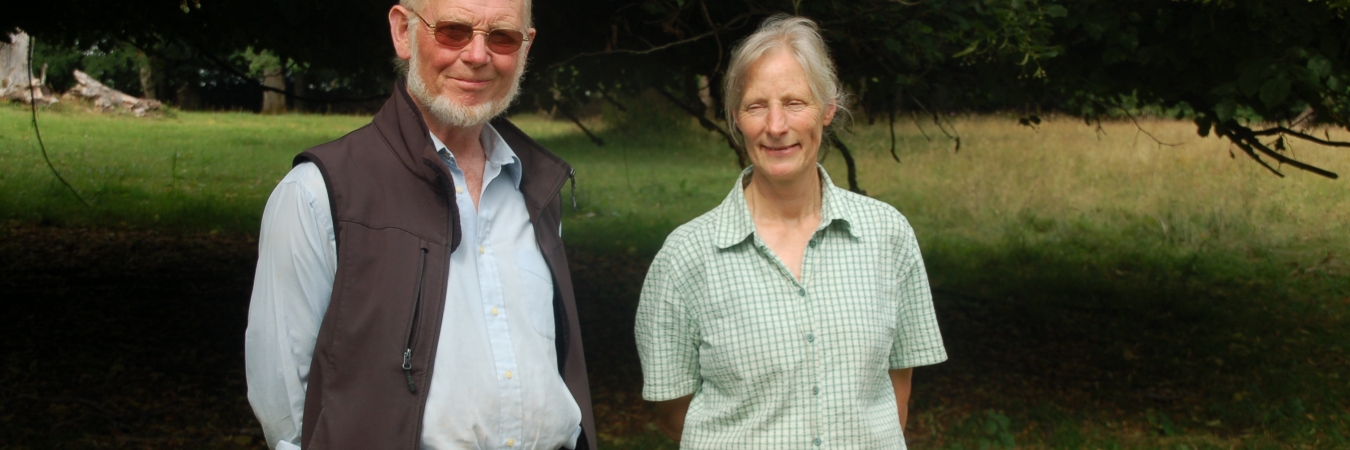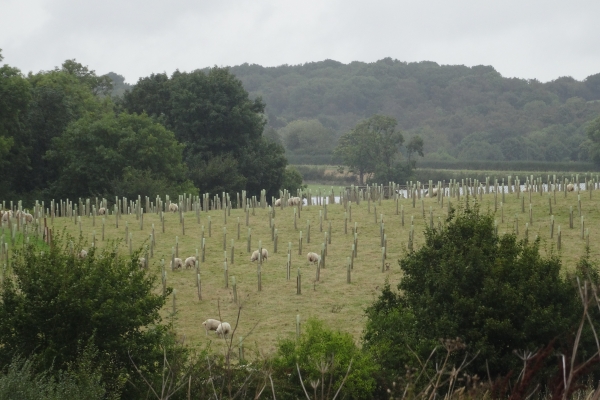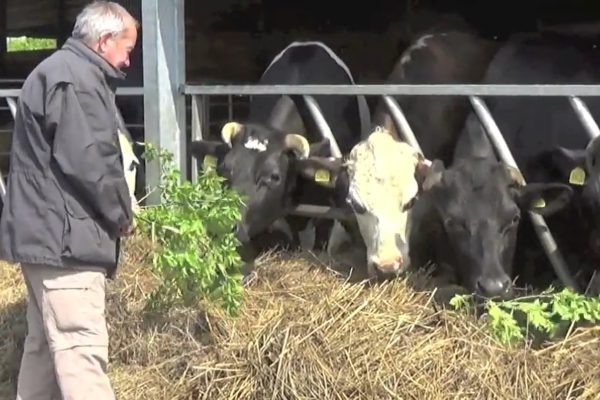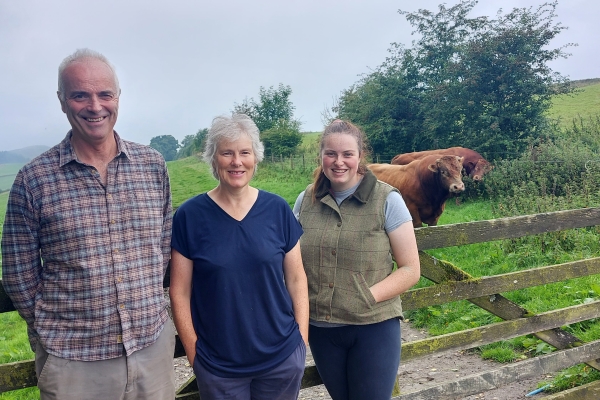“Having come to farming from an ecological background we’re delighted to see some parts of society beginning to demand an agroecological transformation of the food system – and happy to be able to call ourselves ‘agroecologists’”
We run the Morecambe Bay Conservation Grazing Company (MBCGC) in north Lancashire / south Cumbria where we’ve been based now for about 30 years. We graze our livestock on a scattered area of land consisting of around 40 separate sites, most of which are managed as nature reserves by the conservation bodies that own them. These include government bodies i.e. Natural England and Forest Enterprise, charities such as the RSPB, the Woodland Trust and Cumbria and Lancashire Wildlife Trusts, and a few private landowners. This list of our landlords makes clear our close involvement with trees and woodland. The total area covers 730 hectares (ha), of which 620 ha is classed as eligible for grazing by the RPA, with the rest comprising a mixture of bare limestone pavement or dense woodland and scrub. The entire system stretches across 3 counties and includes a large area at Ingleborrough National Nature Reserve in the Yorkshire Dales, where most of the cattle born and reared by us eventually go to be finished by their co-grazier, after which some of them are returned for our direct-sales box scheme.
The grazing is specifically managed to benefit the conservation needs of each of these sites, adjusting the numbers and the type of livestock and the season and length of the grazing period to achieve the required level of impact from their grazing, browsing, trampling and dunging behaviours. Selective breeding within a closed herd system has allowed the herd to become better adapted to these more challenging environments. This includes improvements to their physiological ability to thrive on a diet of unimproved pasture containing only wild herbs and grasses, as well as in their behavioural qualities that allow them to stay safe on large areas of rough ground, whilst facing high numbers of human and canine visitors.
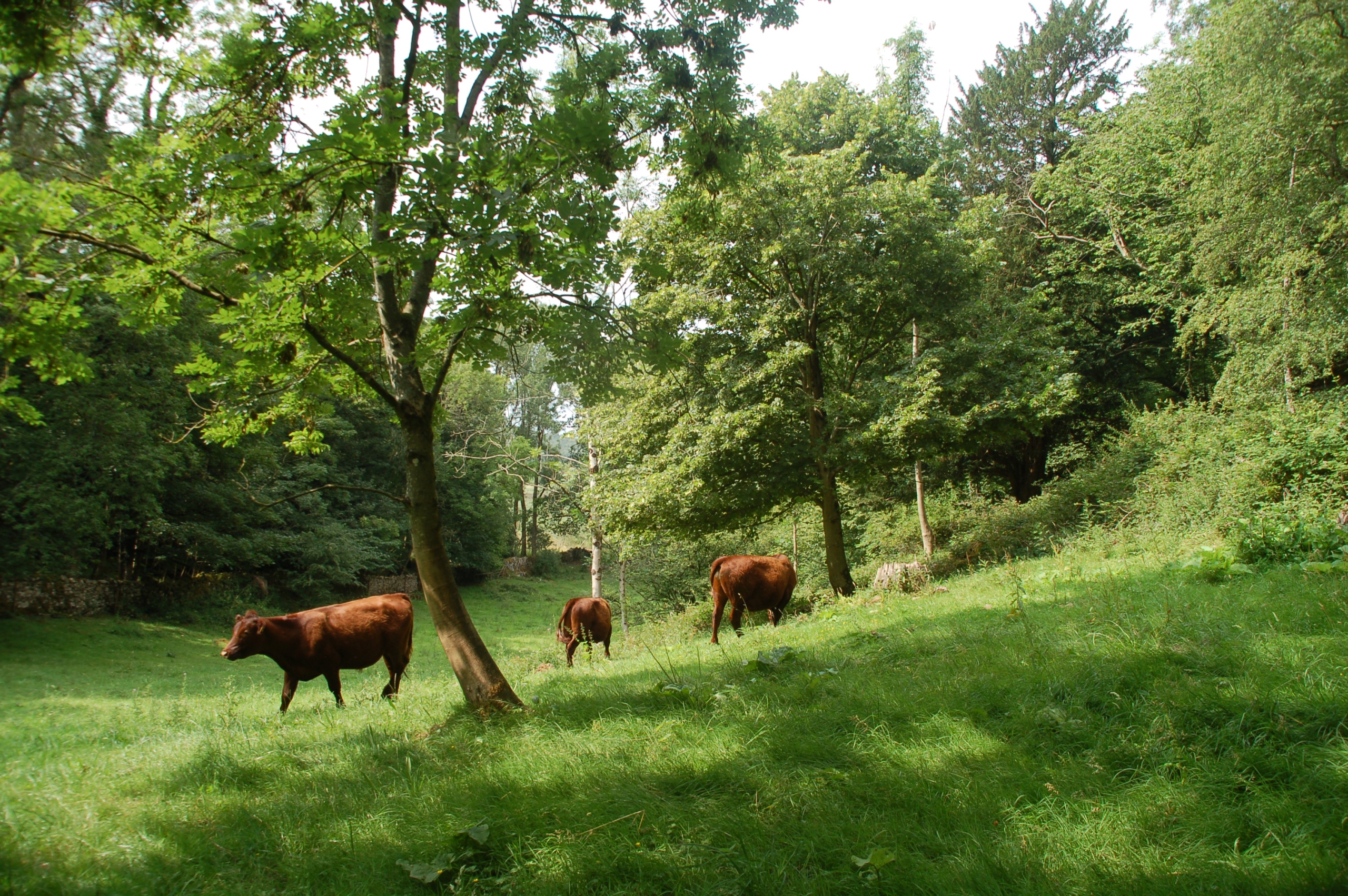
Our cattle are remarkably healthy so veterinary costs are very low. Much of this we feel sure is because of the wide choice of plants that the cattle have access to, combined with their ability to select particular ones they may need at specific times, depending on their individual needs for maintaining growth rate and health status. We are also certain that meat from animals reared on such a diverse diet has special qualities in terms of its taste and benefits for consumer health. Analysis of meat samples from the cattle has shown they contain unusually high levels of the long chain omega-3 fatty acids that are known to provide important health benefits for consumers.
We have about 40 EasyCare sheep centred around 10-12 breeding ewes. All the progeny are finished at 10-18 months and sold direct. The sheep play a useful role in grazing some of the smaller sites or wetter areas where cattle would be too big or cause too much damage to the soft ground. They are also useful for following on from the cattle over winter, helping to browse back bramble and other scrub.
We currently have about 90 head of Red Polls and their crosses, with 15-20 cows put to the bull each year. Calves are born outdoors in May and stay with the cows until they are 10 months old, after which they are reared on the more local sites. Most of the young stock are smaller than cattle of the same age in more conventional settings, having been outwintered on unimproved pasture without supplementary concentrates. Getting off to such a slow start means our store cattle take considerably longer to reach a proper finishing weight, often only going to slaughter when they are 5 or 6 years old, by which time they have usually achieved good weights and conformation. This final product, despite taking longer to achieve, still represents a genuine financial return, having not required external inputs of feed or fertiliser. Whilst this means there is little financial incentive to push them to finish quickly, it is also helpful from a practical standpoint, since the longer these same individuals remain in the system, the better equipped they are for coping with the challenging conditions as they mature and gain experience.
A big limitation in this system is the shortage of better quality grassland on which to graze the cows whilst suckling their calves in the summer months. This restricts the number that can be put to the bull each year to between 15 and 20, which of course sets an upper limit to the number of calves that are born into the system annually. Some of the cows, which would otherwise be deemed surplus to requirements, are therefore calved only in alternate years, which gives them a much longer suckling period than they would normally have. Cows undergoing this extended suckling period can be outwintered without supplementary feeding, along with their calves, on some of the larger areas of limestone grassland that have not been fully utilised over summer. Extending the suckling period in this manner produces a significantly stronger store animal at 18 months of age than can be obtained with the conventional annual breeding cycle, and without any additional input costs.
When the animals are eventually ready for slaughter, the beef and lamb is sold directly to a circle of local people who are concerned about the environmental provenance and nutritional quality of their meat. We are fortunate to still have access to small scale abattoirs and butchers locally where the animals are dealt with humanely and our meat can be cut and packed to a high professional standard.
Find out more here: The Farm continued….pdf
In this podcast, recorded in July 2021 at their home, Bill and Cath talk about their background and how they came to do what they’re doing now. Their story of how this combination of farming and nature conservation came to the fore for them is a fascinating one as it unfolds from early days of taking a small flock of sheep and a few cows with them everywhere they moved, to eventually settling at Silverdale where they brought up a family whilst gradually taking on grazing of more and more natures reserves.
They describe how the MBCGC has been able to deliver mutual benefits, both for them as tenants and for their landlords, who need to find ways of managing their nature reserves more effectively. They explain how they are developing partnerships with fellow conservation graziers to help build a more resilient future for the whole operation and are hoping this new conservation grazing collective will ensure their grazing system is able to continue operating in much the same way as when it was run as a single business, hopefully paving the way for them to eventually retire.
They focus particularly on the benefits, challenges and practicalities of basing much of their farming system around wood pasture habitats, adopting Nature’s own version of agroforestry, the key points of which are included below.
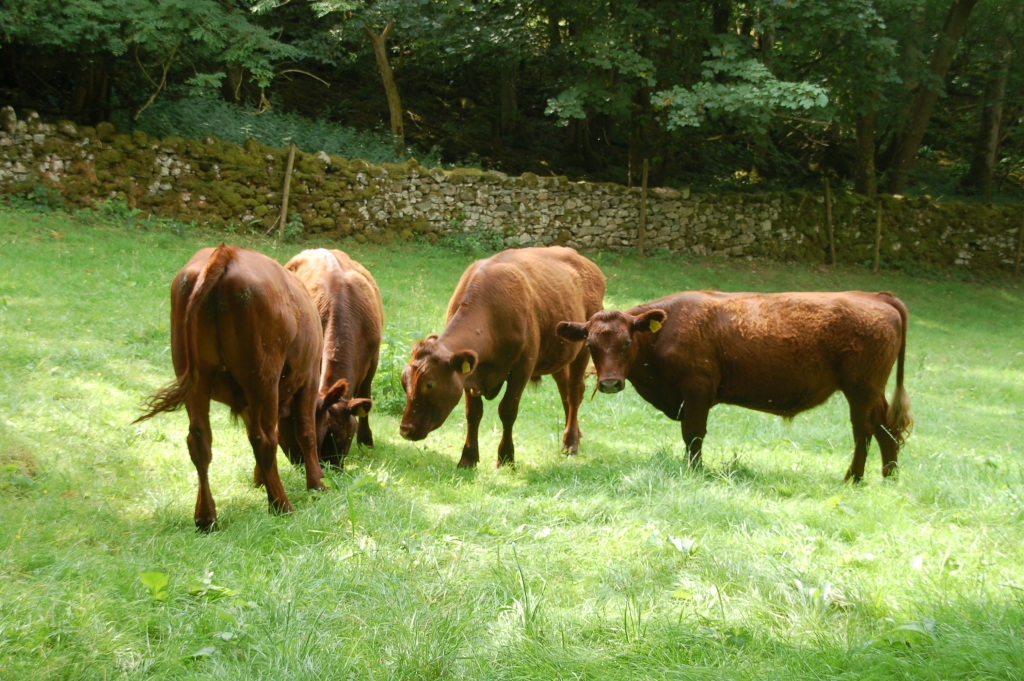
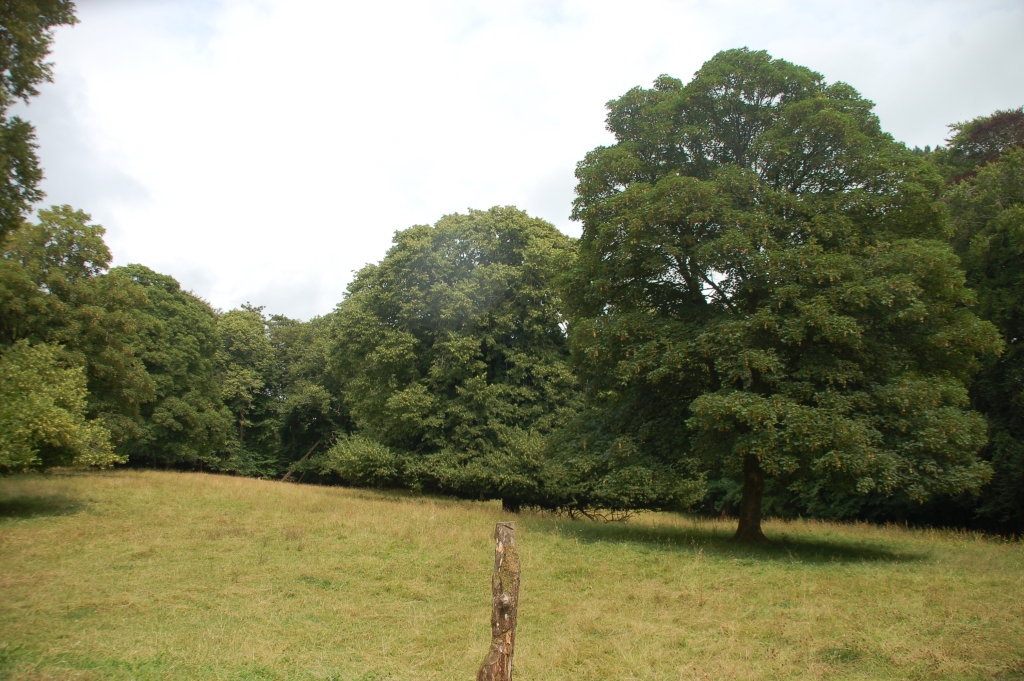
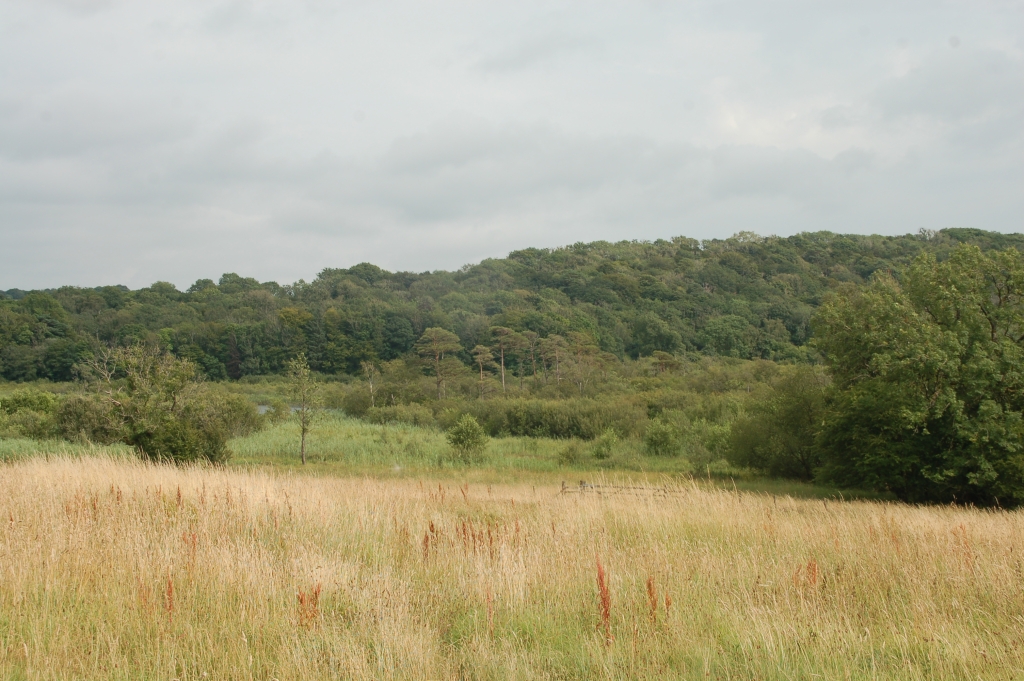
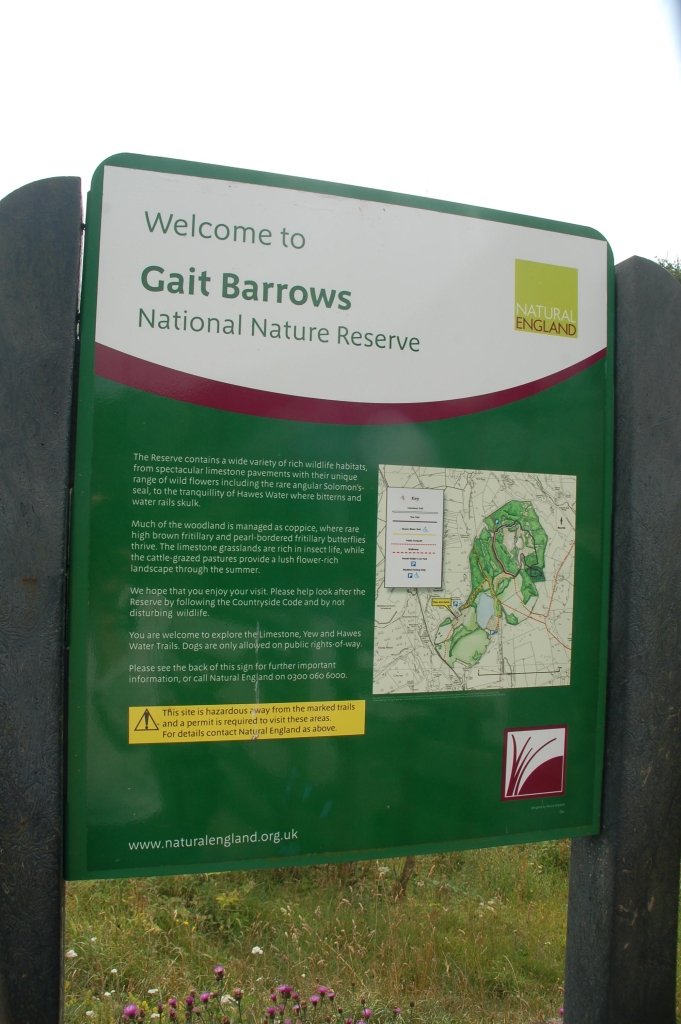
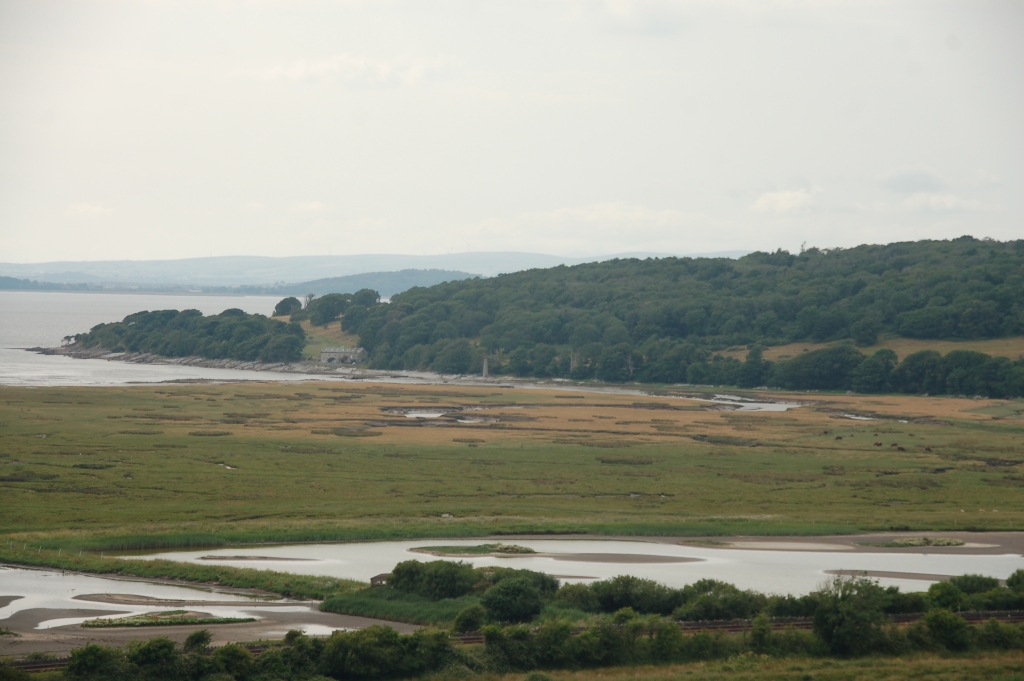
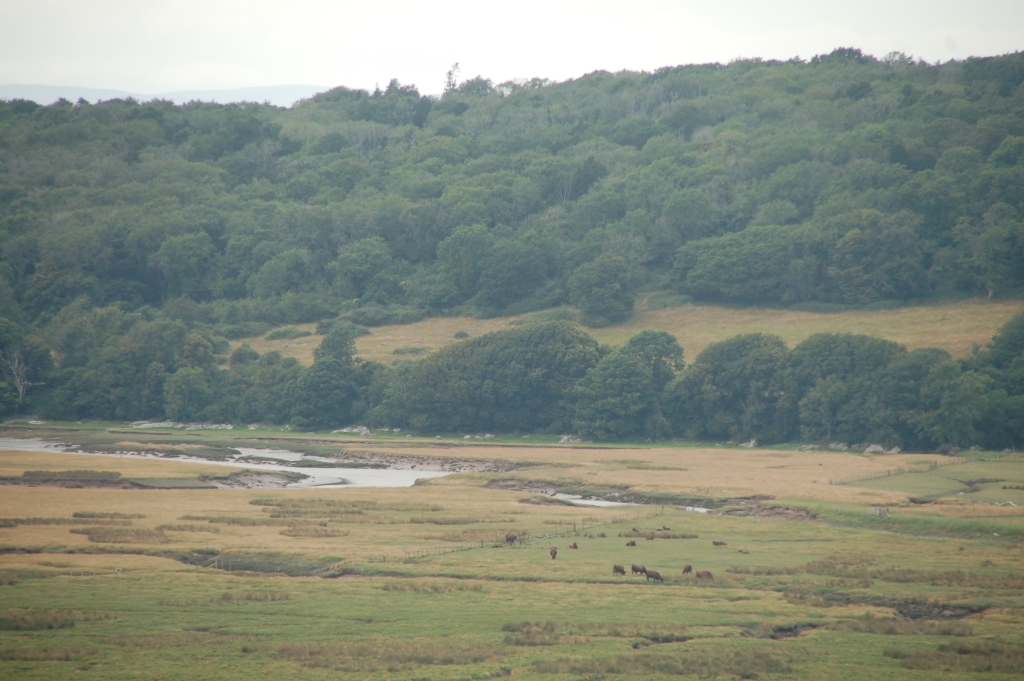
Sustainability in practice
Agroforestry – Wood pasture
Way in which the trees fit into the conservation grazing system & main tree & shrub species
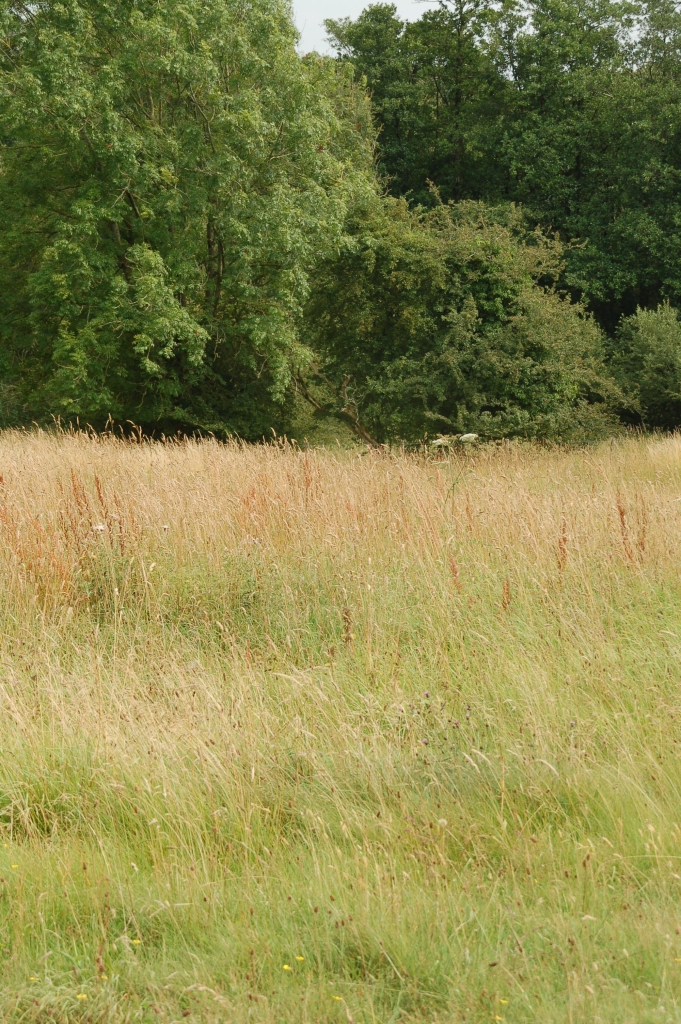
The land on which we graze our animals includes a range of semi natural habitats, an intricate mosaic of grassland, scrub and woodland that can be conveniently summed up by the term ‘wood pasture.’ It occurs quite extensively in the Morecambe Bay area, usually in quite large blocks of 10 – 50 hectares, with tree-cover probably occupying about a third of the total grazing area.
Despite its heavily wooded appearance, there is not much ancient woodland immediately surrounding Morecambe Bay. This is because historically all the uncultivated land was devoted to livestock rearing, which ensured that the limestone hills were kept open by grazing animals (mostly sheep and goats). However, a long agricultural depression in the early 20th century led to the loss of much of this pastoralist activity, after which trees and shrubs were soon able to self-establish by natural regeneration. Much of the abandoned land contained important areas of wildlife habitat which in the post-war years was largely acquired for nature conservation. However the advancing woodland and scrub was beginning to smother much of the open limestone grassland, which in many respects was the main conservation feature on most of these sites; many of which had been designated as Site of Special Scientific Interest precisely because of the importance of their grassland ecosystems. This came as a wake-up call for the conservation bodies responsible for these sites, who began to ponder how they could reintroduce the grazing needed to prevent their reserves from being completely overwhelmed by the advancing scrub and secondary woodland, and was one of the reasons why we took on the lease at Bank House Farm.
The fact that all this woodland and scrub has developed under its own steam has meant that it is especially diverse in terms of its species composition, providing a rich mix of trees and shrubs from which the cows are free to select their favourites. They appear to actively prefer ash, sycamore, elm, both kinds of buckthorns and rowan; birch, hazel, oak, blackthorn and sallow less so (see footage below of a cow tucking into ash). They largely avoid eating alder, elder, hawthorn, bramble and juniper. Yew is a special favourite, despite being renowned for its toxicity, but luckily they seem to know how much is safe to eat; it seems there is merit in the old adage asserting that the poison is in the dose.
The transition to woodland and scrub following removal of farming activities corresponds with latter day campaigns for rewilding, and certainly the natural regeneration of woody vegetation is one key element of this process. However what is apparent from the Morecambe Bay experience is that just left to its own devices, succession can result in an overall loss of biodiversity. The inclusion of animals that graze and browse checks these successional forces so that a more diverse mix of open and shaded habitats can be sustained as part of the mosaic. We describe this approach as ‘re-naturing’, believing it can get us closer to the idea of wild nature as it might have existed in Britain before farming took over but without completely excluding active human intervention. It aims to restore most of the natural processes that originally shaped prehistoric patterns of vegetation in this country. It employs domestic livestock that are well adapted to these conditions, giving them the freedom to roam, subsisting on a diet of whatever wild plants are provided in that location and at that season, which they consume entirely according to their own instincts. This is all consistent with a vision of Britain’s pre-agricultural landscape being largely composed of wood pasture, an opinion that many ecologists seems to have adopted over recent years.
Benefits experienced from combining woodland & pasture
We have found that cattle are ideal for grazing our wood pasture sites. Unlike sheep, they are a native species to Britain, tracing their ancestry back to the aurochs; the original wild ox that roamed the countryside up to the Bronze Age. As such, they ought to be ideally suited to subsisting amongst open woodland where they have access to sunlit glades, taking advantage of all the resources that both types of habitat can provide. They are excellent browsers, tall enough to reach up into the canopy, and have long flexible tongues that gives them extra reach, whilst their size and weight help them to push into denser stands of scrub. In doing this they create a valuable mosaic of ‘edge habitat’, especially important for some species of butterfly such as the high-brown fritillary, which, whilst still found on sites locally, has become rare elsewhere in the country.
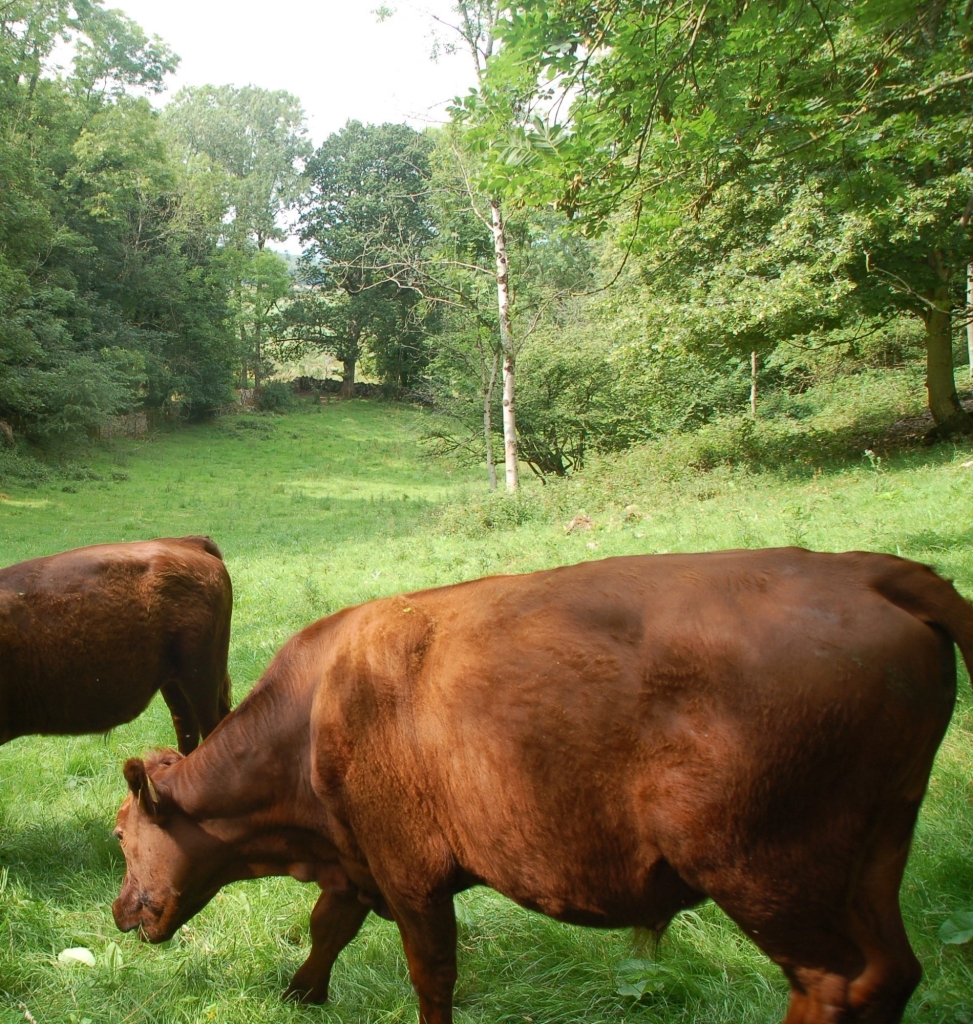
Our grazing system provides ample opportunity for trees and shrubs to self establish from nearby seed sources as part of the natural regeneration process. It seems that establishment of seedling trees occurs most easily in more open areas where the sward has been kept sufficiently short by grazing and treading. Provided that the grazing is not too severe, these seedlings stand a good chance of surviving long enough to start laying down their first season’s woody growth, after which they become less palatable and more likely to establish for the long term. One of our main concerns is delivering optimum results for both animals and nature by maintaining a balance and preventing woodland and scrub from overwhelming the grassland, which would eventually make it unsuitable for the cows as they cannot cope with too much tannin in their diet. Whilst establishing more woodland does have potential carbon sequestration benefits, it needs to be managed in a way that also helps restore nature; the climate and biodiversity crises must be resolved together.
Management of trees & livestock interaction with the trees
In this system, nature does much of the work, and managing it successfully requires an acceptance that nature will be the ultimate arbiter of all the outcomes. We can move the balance point between tree establishment and scrub control by taking animals on and off at different times and in different amounts, whilst the site manager can intervene more directly when scrub clearance is carried out or trees are thinned where needed.
Whenever there is a need to remove scrub or trees, some will be left as a food resource for fungi and invertebrates, and some removed for firewood for heating and cooking. We are exploring new possibilities for utilising smaller branchwood that often has to be burned on site to keep the grassland open. Investment in a woodchipper could avoid this and the woodchip produced could be composted with the aid of farmyard manure (FYM) as a soil amendment.
We are trying deferring grazing from the summer and moving it to the winter on a number of different sites. It is working well so far, and has allowed dry cows, store cattle and cows with calves at foot to be overwintered at very low cost. We are even able to market finished beasts during the winter months straight off these pastures without any supplementary feeding. Another big saving is in the Company’s carbon footprint from not having to burn so much fossil fuels in mowing, baling and wrapping the haylage that these same animals might otherwise need to be fed. Allowing more seedling trees to become woody enough over summer to withstand winter grazing is another good way of promoting natural regeneration of trees.
We have observed that whenever cattle have trees to browse they always make use of them for short spells at a time. After spending a few minutes eating foliage they go back to graze nearby pasture, returning a while later to get a bit more browse. As the years have gone by, we have become aware that the cattle seem to have become more committed to browsing, taking it in longer and more frequent spells than they would have done when the system was first being established. This is particularly obvious in the winter, when they can be seen eating whole twigs and even branches, which at this time have lost all their leaves (see the footage below – showing browsing of winter birch twigs at Gait Barrows). We attribute this change to the herd having developed a stronger browsing culture, with youngsters copying the older animals. Calves just a couple of weeks old will also begin to browse low shrubs alongside their mothers, picking up the habit very early on, along with the necessary microbes needed to equip their developing rumen to be able to process such an unconventional diet.
This intermittent feeding is related to browse containing tannins; defence chemicals that plants use to protect themselves against herbivores. Tannins bind with enzymes and other proteins, disrupting the animal’s digestive processes so that they can only consume limited amounts at a time. However they also have been shown to have anthelmintic properties that help cows combat internal parasites. The protein-binding property is useful in helping to make more protein available to the cow’s rumen micro-flora, which helps to improve rumen function so that the grazing animal benefits indirectly. There is even evidence that tannins can also affect the rumen microbial community in ways that reduce the amount of methane that the animal produces.
Browsing is a complicated feeding behaviour that has to fit with the needs and abilities of the individual animal and the situation. Most conventionally farmed livestock are unlikely to cope well with a wood pasture system, having limited experience of it beyond time spent in fields bounded by hedges. We think it works best when animals are free to make their own choices about when and how much of any given species to eat – and when to browse and when to graze. We do provide tree hay for cattle that have to be inside for any length of time and don’t have free access to browse. When it is provided more sporadically and the cattle have no control, it is interesting to note how eagerly they abandon whatever else they are eating or doing to tuck into the dried branches of leaves. These branches are cut from July onwards, mostly from trees growing in the vicinity of the barn where cattle are housed. They are taken in small batches that can be spread out and dried under cover before being stacked for storage till winter. Several different species are available for this – sycamore, lime, ash and wych elm.
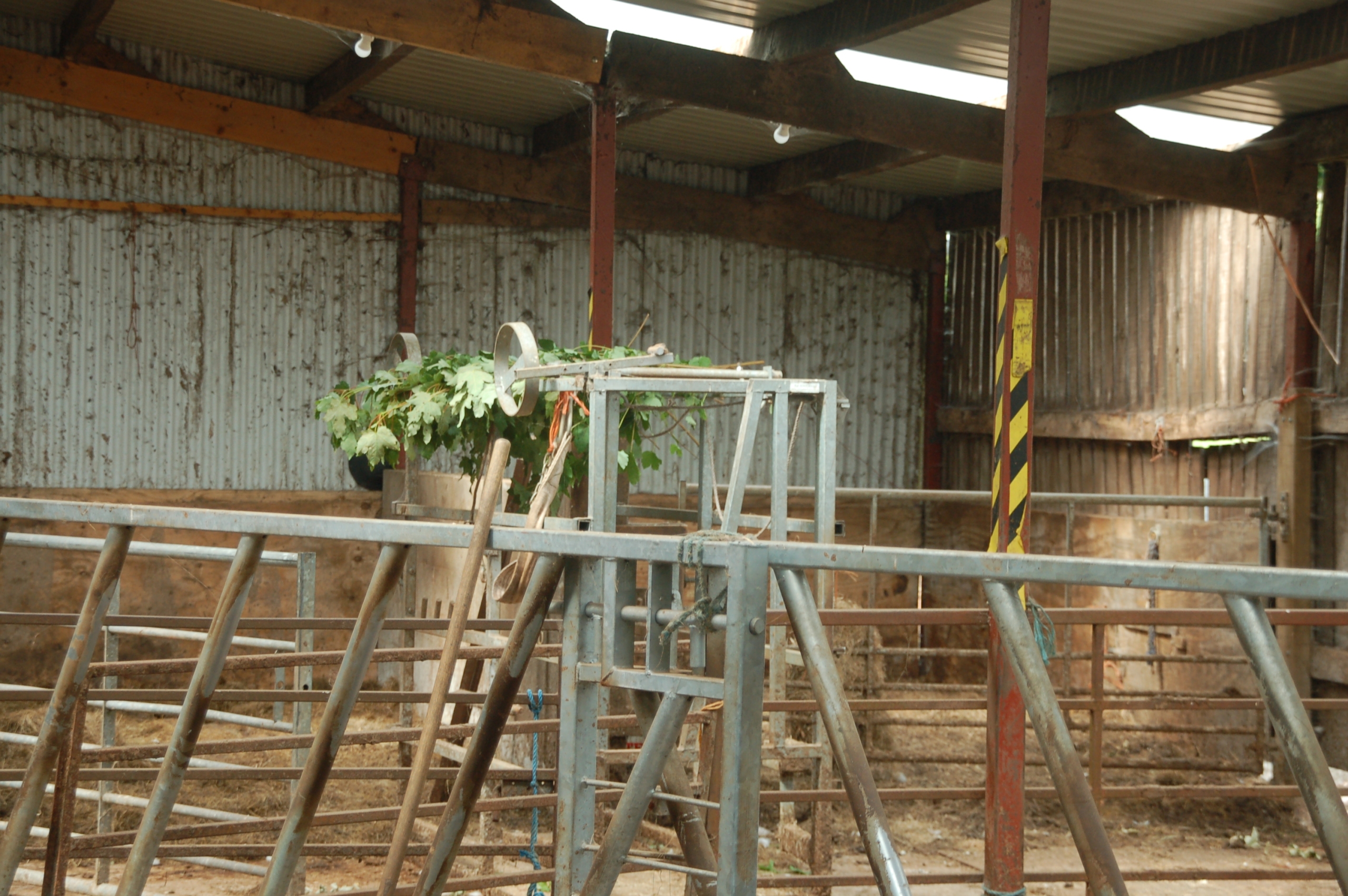
Conservation benefits the cattle help deliver
Enhancing species diversity of the pasture – the cattle’s grazing activities allow less competitive species to maintain their place in the sward. The physical impact of their hooves create breaks in the turf, creating germination niches for seed to find its way in, providing the means for new plant species to germinate and establish. This includes trees and shrubs, and we often see young juniper seedlings (an important shrub for nature conservation reasons) popping up in the middle of quite a well-worn track that the cows have been using.
One of the prime objectives for restoring grazing to these sites initially was to enhance the abundance of certain butterflies i.e the high-brown fritillary. Several other significant butterfly species also occur, all require different food plants for their caterpillars and have their own specific habitat requirements. Managing the grazing to meet all of these various requirements together depends on establishing a grazing regime that maintains the overall mosaic of habitats in a suitable balance that keeps the advancing scrub in check without eliminating it altogether. Bracken is an important part of the habitat mix on many of the sites, playing a special role in the ecology of the fritillary butterflies. The only food plant for these species is the violet, which can often be found growing on the edge of bracken stands where cattle have created gaps and openings that let in sufficient light. We can help create more of these violet ‘hot spots’ by placing water troughs in thick stands of bracken, so the cattle have to trample through it when they go in for water.
Dung from the cattle provides additional benefits for wildlife – attracting a huge variety of insects that feed on it. These in turn provide feed for a wide range of larger mammals, reptiles and birds.
Lessons learned – practicalities to consider & main challenges faced
Containment – it is important to check where you have trees on boundaries, there are always issues where they can blow down, knock a wall down etc. Most of the boundaries have been repaired or reinstated with help from agri-environment scheme funding.
Provision of water – many of the sites don’t have natural resources of water or mains to them. Water has to be towed onto these sites in a bowser which has to be regularly refilled in order to maintain the supply. Cattle are thirsty creatures, and can each drink between 20 and 40 litres a day.
Finding and checking cattle – they can be very spread out across large areas of rough ground and thick vegetation. If there is an injured or sick animal it can be quite difficult to get it back for treatment because of limited vehicular access. Keeping good relations with neighbouring farmers, regular visitors and local residents is a good ploy!
People – the majority of sites have public access – there can be issues with dogs (worrying) and humans misbehaving (leaving litter, and open gates), and some people being afraid of or feeling bothered by cows (another reason for having a closed herd – where you get to know the animals well and can select only docile, amenable animals for breeding)
Costs
It is a very cheap system to run – the animals cost very little to maintain, with almost no feed or veterinary inputs. So whilst they don’t grow as quickly as in a conventional system they still provide a genuine economic return.
Looking forward
The FFCC have developed a farming for change model which shows that the UK could have an agroecological food system that meets the nation’s food needs, whilst providing healthier diets, free of chemical residues, emitting far fewer greenhouse gasses and making room for much more wildlife in its midst. We share this vision for a food system focussed on survival and are working with a couple of local food and land management groups helping to develop plans for achieving this vision and making the case for agroforestry having an important role. We are especially keen to highlight the importance of supporting farmers who are combining livestock and trees. We are members of Food Futures (local food group in Lancaster) where we are exploring the potential for marketing the meat we produce and supplying their network of growers with our organic FYM. We are also interested in discussing possibilities for converting woody materials arising from management of our woods and hedges into compost so they can be used as soil amendments to help supply other farmers and growers’ fertility needs.
Wider scale adoption of agroforestry
The current approach to funding and paying farmers for public services needs to be more focussed towards wood pasture – completing basic payment application forms has been tricky because the RPA may not recognise grazed woodland as being eligible for payment! Whilst it may be true that ground cover can be limited by the density of the tree canopy, the cattle are still able to benefit from grazing trees… We are keen to join discussions with Defra about these issues and have signed up to enter the pilot for the Sustainable Farming Incentive, intending to submit an application for some fields that are not currently in an existing stewardship scheme. Here too the same problem seems to still apply as the only suitable options available to us seem to be either unimproved grassland or woodland, but nothing combining both. It will be interesting to see how such problems are resolved before the scheme is rolled out next year.
Climate change mitigation – the Climate Change Committee has recommended that about 30% of upland rough grazing should be converted to plantation woodland. We have tried to raise concerns about the increasing risks of wildfire as temperatures rise and the increasing likelihood that dense stands of trees will go up in smoke, releasing all of their newly sequestered carbon straight back into the air. There is a body of evidence to show that where woodlands are routinely grazed, this risk of losing them to wildfire is much reduced – a strong argument for the agroforestry approach.
Farmer tips
- You have to work out how growing more trees can fit in with your whole system, especially if it depends on maintaining sufficient output for achieving economic viability. It is important to assess the whole package, not just how quickly the animals finish – you might have to wait longer to get the final return for the sale of the animal, but you can still have something that at the end has generated a better return because it has cost less to get it to that point.
- If you are interested in farming in this way it would be worth making contact with your local wildlife trust or other conservation bodies that manage nature reserves in your area to find out if they need new graziers. Most conservation organisations are unwilling to take on the responsibility of owning their own livestock so there is plenty of scope for them to link up with independent conservation graziers – and deliver benefits for both parties.
- If you have large sites with lots of trees, you can spend a lot of time trying to find livestock – you can get GPS tracking collars to help with this. There is even a new type of GPS system that uses a similar principle to restrict the movement of animals to a specific area.
- When taking on a new site for the Forestry Commission a few years ago, regular visitors and dog walkers expressed their apprehension at suddenly having to share the space with a group of cattle. We eventually overcame this by starting a ‘looker scheme’ in which a team of volunteers were trained to count and check the cattle as they walked the site, reporting any problems to us as they occurred. Such schemes can give members of the public a sense of ownership and help overcome problems or avoid issues.
This profile was created by Janie Caldbeck as part of ‘A National Network of Agroforestry Farms’ project. Find out about it here.
Find out more about how the system works and lots of interesting insights into grazing management and interaction with trees in this article written by Bill that was published in the Conservation Land Management magazine: CLM17-2 03 Browsing_V2.pdf
The Graysons are members of the Pasture Fed Livestock Association (PFLA). View the PFLA profile for MBCGC here.
Many thanks to Bill and Cath Grayson
Video footage of cattle browsing courtesy of Bill Grayson
